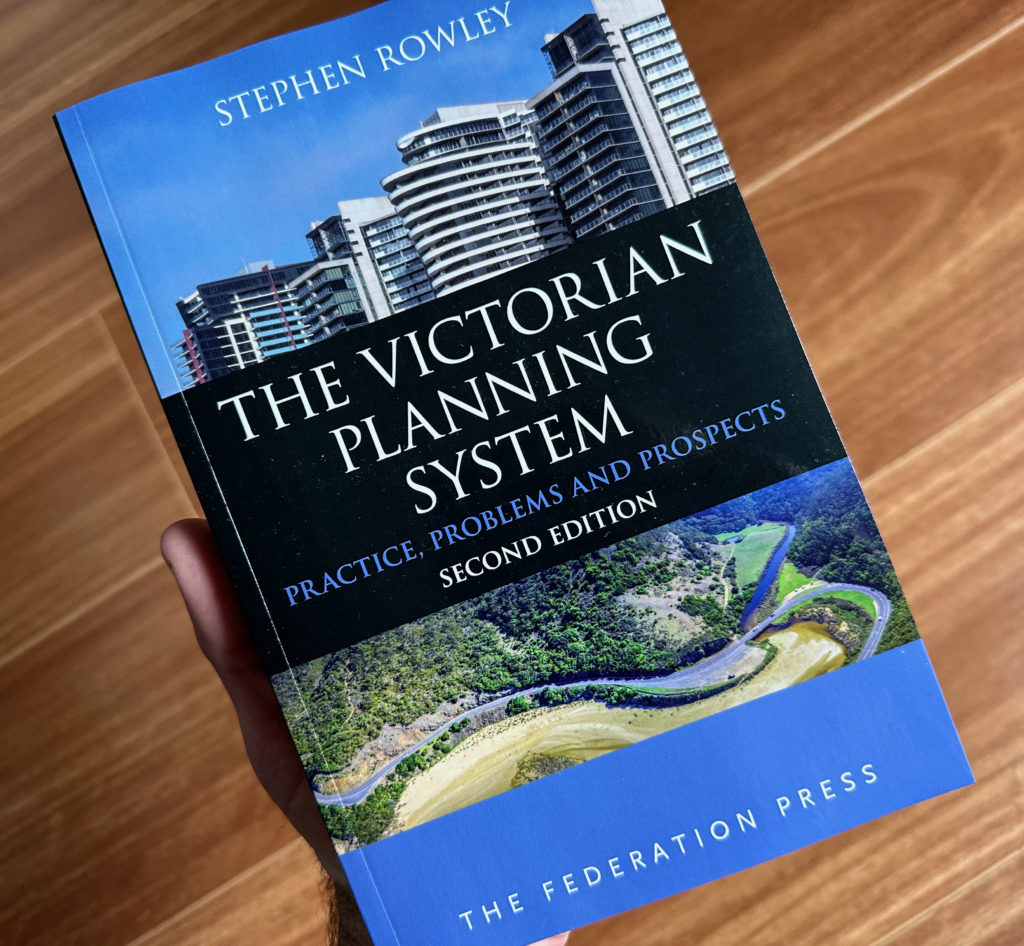
The new edition of my second book, The Victorian Planning System: Practice, Problems, and Prospects, is out now.
The book has been comprehensively revised, with factual updates throughout. It has also been thoroughly re-theorised, drawing more on literature about regulatory design, and more carefully drawing put principles of good decision-making and good system design. As a result its critique of the operation of the system has been considerably sharpened. I think I’m much clearer now than I was in 2017 about why the Victorian system – which seems so sound in theory – has performed so disappointingly over recent decades. I also try to outline an alternate approach to system design that I argue can lead us away from the repeated cycle of unhelpful or counterproductive reform that we have seen over the last two decades.
In addition to the reconceptualisation noted above, major revisions include:
- New Foreword by the Hon. Richard Wynne.
- Updated to reflect the new post-Smart Planning / VC148 structure of schemes
- New discussion of good decision-making.
- Thoroughly revised discussion of system design, including more carefully defining a vocabulary for sophisticated system design discussion, and new sections about the ideal planning provisions and ideal planning system.
- More discussion of the proliferation of special purpose system streams.
- Discussion of betterment and compensation, including the windfall gains tax.
- Extensive updates to the discussion of metropolitan strategy, including Plan Melbourne 2017-2050 and its implementation.
- Extensive updates to the section on residential development, including discussion of how the new zones have been managed, apartment standards, the proposed “Performance Assessment Modules”, and an updated critique of the current sorry state of the residential development provisions.
- New section on housing affordability.
- Expanded discussion of PSPs, notably including more critique of outcomes.
- Major updates to reflect the new Environment Protection Act, including discussion of the roles of general duties.
- Sustainable built form discussion updated to reflect recent changes, including the ESD roadmap.
- New section on native vegetation removal and biodiversity offsets.
- Restructured and updated discussion of climate change adaptation.
- New section addressing the difficulties of addressing Aboriginal heritage in a colonial planning system.
- Updated history of system reform, addressing smart planning and the Better Regulation Victoria review.
- More use of regional examples throughout.
- Generally about 25% crankier.
These are amongst many other updates.
I’m really proud of the new edition and really hope it is helpful to people (and more successful than the last edition was at influencing the path of system reform!)
For the publisher’s page, including an order link, see here.